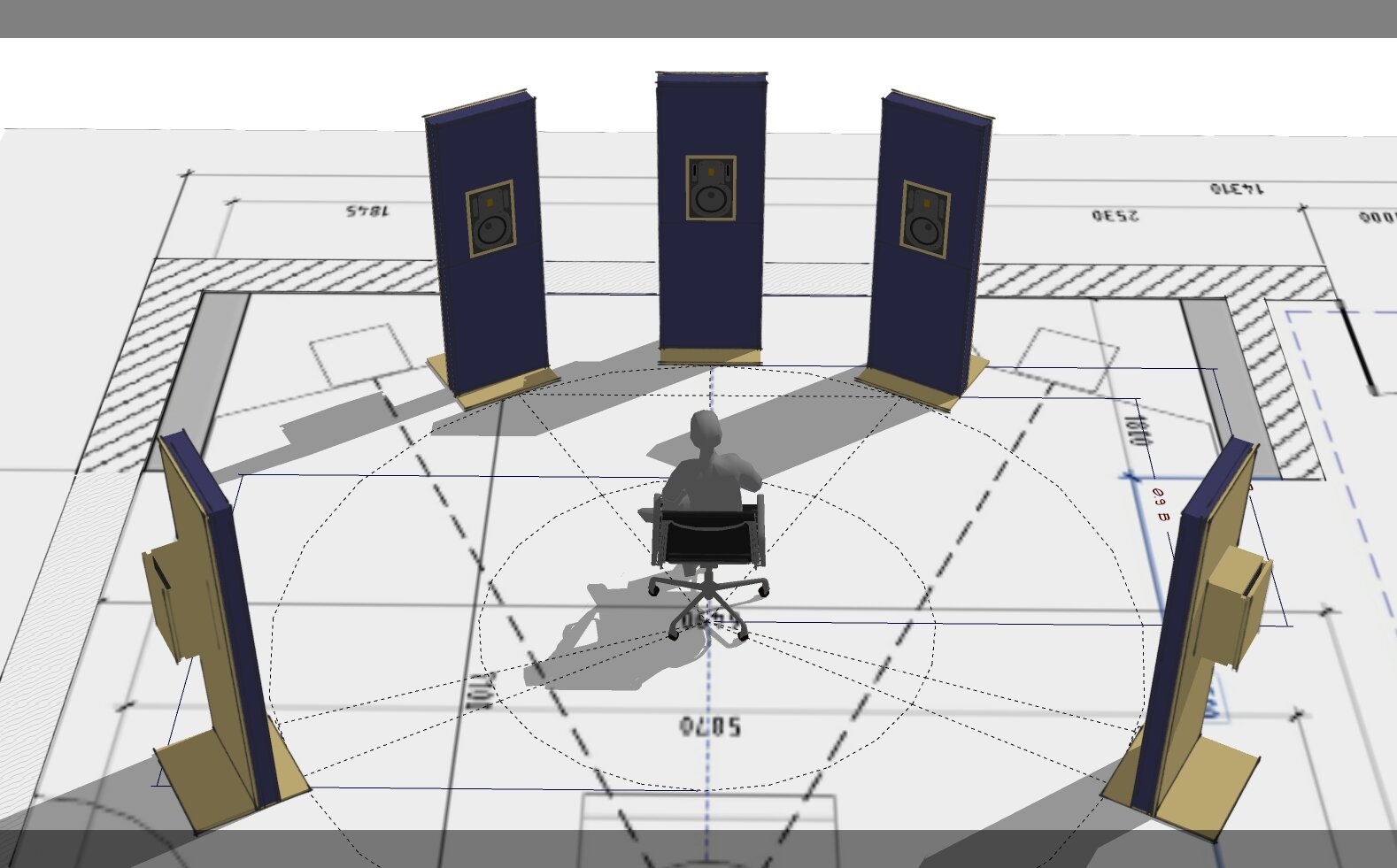-
Posts
2,297 -
Joined
-
Last visited
Everything posted by Glenn Stanton
-
you will have "movement" projects. then you export those as audio. you will have a "master" project where you align each movement into a track. blend as needed by adding some additional audio or MIDI. then export the entire thing to your stereo / multi-channel output. you're likely composing this a movement at a time, so do the same for the performance and add the blending bits where there is a need.
-
ok, so this sounds like a fix might be needed to accommodate MIDI type 0 - create the only the required number of MIDI tracks and set the respective channels. ? and/or get the vendors to stop using channel 10 (or any other channel in a single channel type 0 other than say channel 1). although in the latter case, there may be dependencies by vendors where their products require it for proper operation due to legacy code... also sounds like an intermediate project should be used to convert the MIDI files or simple expand them into clips, rather than dragging them into the main project, maybe create a blank project, drag your clips into it, then copy & paste the desired MIDI clips into the main project.
-

Groove clip looping not working ( for me!)
Glenn Stanton replied to RICHARD HUTCHINS's topic in Cakewalk by BandLab
actually they're about 4 billion transistors. it's a miracle they ever work... -

FR: Absolute Time Offset for MIDI Tracks (by ms)
Glenn Stanton replied to apt's topic in Feedback Loop
and by renaming a project template (CWT) (or even the project CWP) as .CWX, you can load it... but i don't see any MIDI (or any audio either) coming through when importing it as a track template. maybe i'm missing a step in the process, but it seems like the MIDI (and audio) are stripped out during the track template loading process. -
thanks. i get the same behaviour - the kick produces 8 empty tracks + 1 with the notes. and definitely has the type 0 flag. the hats produce the expected number of separate tracks and is type 1. the kick MIDI only has the 1 track marker, and i'm not seeing in Hex editor what is causing the additional tracks. then again i'm not a MIDI format expert by any means... ? MIDI files from DRUMTRAX do the same thing as the Goran files, whereas Groove Monkee MIDI imports as expected. type 0 single track, type 1 however many tracks. @msmcleod any thoughts on why some MIDI files are causing the extra track inserts? COU_192 is DRUMTRAX (generates extra tracks) COU_192.MID
-
@John Vere did a whole video on inexpensive IO units
-

Groove clip looping not working ( for me!)
Glenn Stanton replied to RICHARD HUTCHINS's topic in Cakewalk by BandLab
typically the audio is going to be the variable tempo. unless someone really went out of their way to humanize any MIDI sequences. you may be entering the world of "audio snap" ? or the world of "remix" where you convert the instrument audio to MIDI, quantize it etc and use virtual instruments to recreate it, then tweak the vocal and solo parts over that... -

Sonar 8.5 Producer: Is VST3 Supported?
Glenn Stanton replied to Annabelle's topic in Cakewalk by BandLab
@msmcleod could a VST3 preset be used with a VST2 plugin? perhaps if the controls for each are effectively the same but i'm not use if it's using an internal id for a given control or just the control name. -
the challenge is the "takes" in physical form are not in parallel. they are part of the long WAV file, and takes are simply time marked sections of that file which are then shown to you in parallel. so trying to tweak the takes "in time" are generally not easily done - either through programming or physically altering the file -- which is the option Max shared. the other option is not to use take lanes and record each take to a separate track. if using this option, you can end up with a lot of tracks - so i like to export the instrumental part (wher the arrangement is mainly settled) and then use that in a separate projects for vocals only (i may do the same for tactic soloing as well). then once you've comped things, export the tracks and insert them into your main project.
-
no worries. just keep in mind that once you step beyond the first few recordings and now you want the higher quality, or acoustic mic etc, there are many inexpensive IO units which will give you audio + MIDI etc greatly expanding your options.
-

How do I get those fancy Start Screen pictures for my own templates?
Glenn Stanton replied to Starship Krupa's question in Q&A
after adding the image, save the file as a CWP (normal), then go to the folder (i have one called "templates") and make a copy of it. then renamed it "mytemplate".cwt (where "mytemplate" is whatever you want to call it - use 00, 01, 02 in front of the template name to make them sort to the top -- e.g. "00 record template" "01 mix template" "02 master template" etc) so: create or edit the new or existing template.CWP file insert the image into the notes section of a NORMAL project save as CWP copy & paste the CWP (so you can go back and edit it again later without starting over) rename the copied CWP to the template name (usually remove the word Copy) and extension of CWT copy the CWT into the \common\project templates and the \core\project template folder if you need to revise the template, then follow steps 1-5 and ignore step 2 (you already did) -

Sonar - strange happenings...
Glenn Stanton replied to Salvatore Sorice's topic in Cakewalk by BandLab
check for the Windows and OS related updates as well. the supposedly backward compatible redistributables can be the cause. like today for me - new KB updates on the OS - so a quick run of the redistributables and rescan VST to be sure. everthing seems to be running normal. i just get into the habit of doing this to avoid finding out i have issues when i'm working on a live project... -
maybe your device has died? maybe you need to get the latest drivers from Presonus and reinstall it? maybe there are some troubleshooting steps on the Presonus site? if it's not showing up in the Windows device manager, then you need to fix that first. https://www.fmicassets.com/Damroot/Original/10001/OM_2777700106_AudioBox-Go_EN.pdf https://www.presonus.com/en-US/interfaces/usb-audio-interfaces/audiobox-series/2777700106.html
-

Groove clip looping not working ( for me!)
Glenn Stanton replied to RICHARD HUTCHINS's topic in Cakewalk by BandLab
to me, that would seem to indicate you only have a single tempo - 76BPM. as David mentioned, you need to drag the edge of the clip to the next full measure (in the examples) to see the "cut". one good way to land on the beat is to set your snap to 1/4. for measures, setting it to 1 or 1/2 will make landing there easier. -
is this one of those "audio-to-USB" cables for $5 on Amazon? one option might be to spend a bit more and a get a decent <$100 audio interface. that said check the device check the drivers see if a line-level input signal can drive it vs a guitar (which is a very low level signal).
-
it's almost like you'd want a sticky thread "Read/Watch This First" thingie to post links (with descriptions) of your videos
-
as part of the install process - did you select the cakewalk content / demo installation? if not, go ahead and run that. if you did, check in the content folder: C:\Cakewalk Content\Demo Projects
-
there is a text section in the beginning of the strum-it.cal file which might be what you're looking for? per this old thread: http://forum.cakewalk.com/Strum-it-cal-m1432672.aspx





